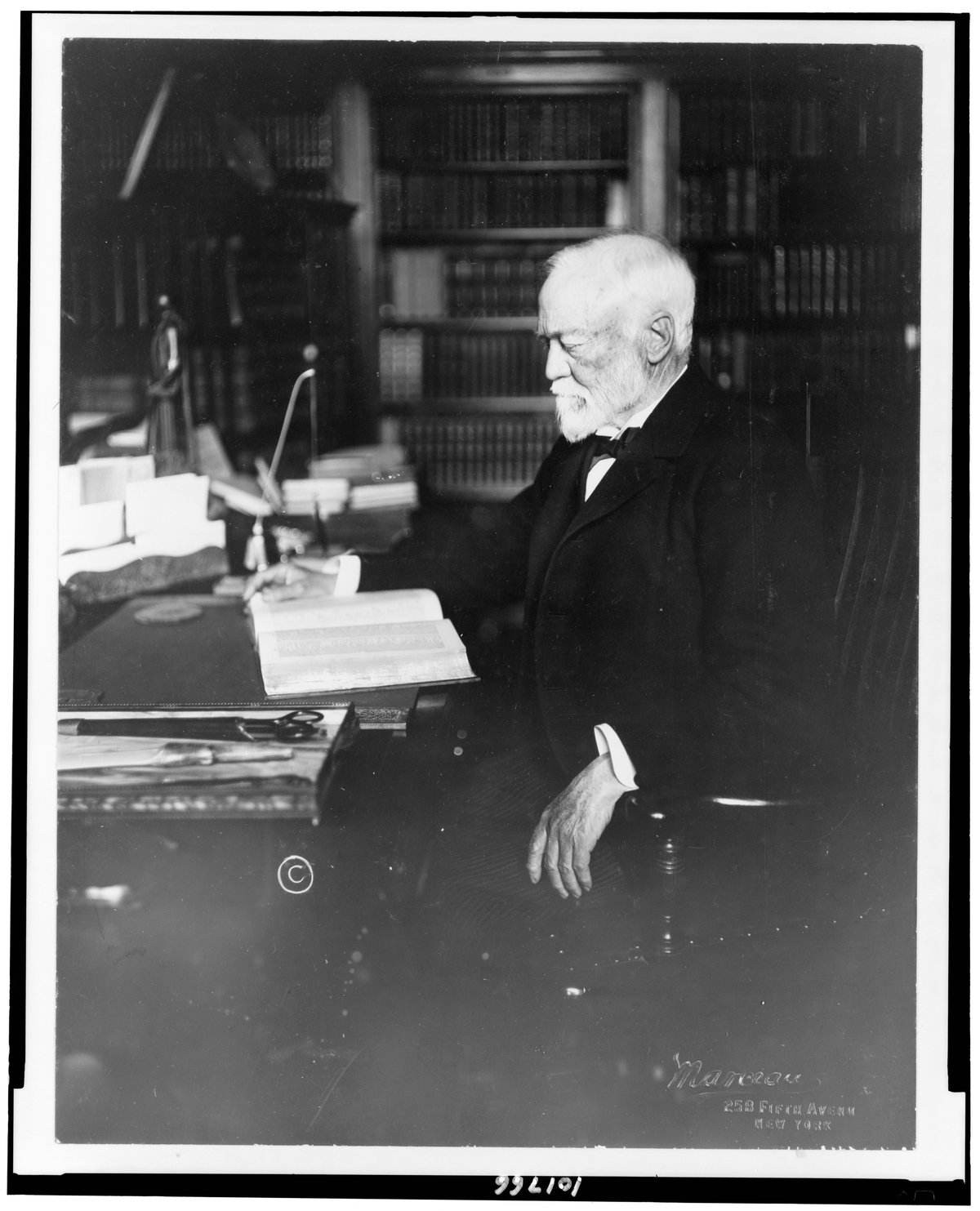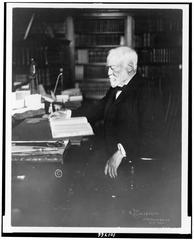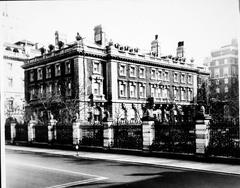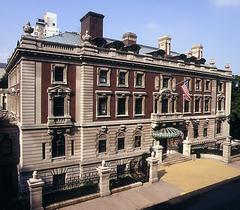
Andrew Carnegie Mansion Visiting Hours, Tickets, and New York City Historical Sites Guide
Date: 14/06/2025
Introduction
Nestled at 2 East 91st Street on Manhattan’s Upper East Side, the Andrew Carnegie Mansion stands as an enduring symbol of Gilded Age ambition and architectural innovation. Originally commissioned by Andrew Carnegie—the famed Scottish-American steel magnate and philanthropist—the mansion was constructed between 1899 and 1902 as an embodiment of modern luxury and technological advancement. Today, it houses the Cooper Hewitt, Smithsonian Design Museum, providing visitors with a unique opportunity to explore the intersections of history, architecture, and design in one of New York City’s most prestigious neighborhoods (Cooper Hewitt; City Beautiful Blog; Secret NYC).
This guide offers a comprehensive overview of the mansion’s origins, architectural innovations, visitor information, accessibility, guided tours, nearby attractions, and practical tips for making the most of your visit. Whether you are a design enthusiast, history lover, or casual tourist, the Andrew Carnegie Mansion promises a captivating experience at the heart of New York City’s Museum Mile (Village Preservation; NY1).
Table of Contents
- Introduction
- Origins and Construction of the Andrew Carnegie Mansion
- Architectural and Technological Innovations
- Life in the Mansion & Its Neighborhood Impact
- Visiting the Andrew Carnegie Mansion Today
- Preservation and Restoration
- Practical Visitor Tips
- Frequently Asked Questions (FAQ)
- Conclusion
- References
Origins and Construction of the Andrew Carnegie Mansion
Andrew Carnegie sought to build “the most modest, plainest, and most roomy house in New York,” selecting a then-remote plot uptown to ensure privacy and the rare luxury of a private garden (City Beautiful Blog). Designed by Babb, Cook & Willard in the English Georgian Revival style, the mansion’s construction between 1899 and 1902 marked a significant departure from the more ornate homes of his contemporaries (Cooper Hewitt). Its innovative steel-frame construction was a first for a private U.S. residence, making way for spacious, light-filled interiors and setting new standards in residential architecture (Suzanne Lovell Inc.).
Architectural and Technological Innovations
The mansion features 64 rooms across five floors and was equipped with state-of-the-art amenities for its era:
- Structural Steel Frame: Allowed expansive layouts and improved fire safety (Secret NYC).
- Otis Elevators: Among the earliest in a New York residence, symbolizing modern luxury.
- Central Heating & Air Conditioning: Provided unprecedented comfort (Smithsonian Archives PDF).
- Private Telephone System: Demonstrated Carnegie’s embrace of emerging technology.
- Landscaped Private Garden: A tranquil oasis, reflecting Louise Carnegie’s love of gardening, and accessible to visitors today (Secret NYC).
Inside, the mansion displays refined brickwork, limestone trim, grand staircases, intricate wood paneling, and original decorative elements. The solarium and conservatory remain highlights, while service areas were designed for both staff efficiency and comfort (Cooper Hewitt; Get Out N About).
Life in the Mansion & Its Neighborhood Impact
The Carnegies called the mansion home until 1946, using it not only as a family residence but also as a center for philanthropy. Carnegie managed his charitable endeavors—including donations totaling around $350 million—from this address. The mansion’s construction helped shape what is now known as Carnegie Hill, transforming it into one of the Upper East Side’s most desirable and culturally rich neighborhoods (Wikipedia; Cooper Hewitt).
Visiting the Andrew Carnegie Mansion Today
Visiting Hours
- Tuesday to Sunday: 10:00 AM – 6:00 PM
- Closed on Mondays and major holidays
Always check the official Cooper Hewitt website for the latest updates on hours.
Tickets and Admission
- General Admission: $18
- Seniors (65+), Students (with ID), Military: $12
- Children under 18 and Smithsonian members: Free
Purchase tickets online in advance to secure your preferred time and minimize wait times.
Accessibility
The mansion is fully wheelchair accessible, with elevators, ramps, and accessible restrooms. Complimentary wheelchairs and assistive listening devices are available; for specific needs, contact [email protected] (Cooper Hewitt Accessibility).
Getting There
- Address: 2 East 91st Street, New York, NY 10128
- Subway: 6 train to 96th or 86th Street; Q train to 86th Street
- Bus: M1, M2, M3, M4 along Fifth/Madison Avenues
- Parking: Limited street parking and several nearby garages
Guided Tours and Special Events
Daily docent-led tours are available and included with admission. Special events, such as the Design Triennial or seasonal outdoor programs, provide deeper engagement with design themes. Check the museum calendar for details.
Unique Features and Photography
- Interactive Experiences: The museum provides digital pens for visitors to collect favorite objects and access additional content, enhancing the visit (Timeout NYC).
- Gardens: The mansion’s private garden is open during museum hours and offers a peaceful retreat.
- Photography: Non-flash photography is permitted in most galleries; some special exhibitions may restrict photography.
Nearby Attractions
- The Metropolitan Museum of Art
- Solomon R. Guggenheim Museum
- El Museo del Barrio
- Central Park
The mansion’s location in Carnegie Hill makes it an ideal starting point for exploring New York’s Museum Mile (Untapped Cities).
Preservation and Restoration
After its use as a private residence ended in 1946, the mansion was transferred to the Smithsonian Institution in 1976 and designated a New York City Landmark in 1974. A major $91 million restoration was completed in 2014, expanding gallery space and updating accessibility while preserving historic integrity. The building’s LEED Silver certification underscores its commitment to sustainability (EW Howell; CitySignal).
Practical Visitor Tips
- Advance Tickets: Strongly recommended, especially on weekends and for special exhibitions.
- Visit Duration: Plan for 1.5–2 hours to fully explore the mansion, exhibitions, and garden.
- Bag Policy: Large bags must be checked at the cloakroom.
- Dining & Shopping: The on-site café offers refreshments, and the museum shop features curated design gifts.
- Family-Friendly: Children under 18 enter free, and family workshops are frequently available.
Frequently Asked Questions (FAQ)
Q: What are the Andrew Carnegie Mansion’s visiting hours?
A: Tuesday to Sunday, 10:00 AM to 6:00 PM; closed Mondays and major holidays.
Q: How much is admission?
A: Adults $18; seniors, students, and military $12; children under 18 and members free.
Q: Is the mansion wheelchair accessible?
A: Yes, with elevators, ramps, and accessible restrooms.
Q: Are guided tours available?
A: Yes, daily docent-led tours and private group tours are offered.
Q: Can I take photos inside?
A: Non-flash photography is permitted in most galleries.
Q: Where can I buy tickets?
A: Purchase online at the Cooper Hewitt official website or onsite.
Q: Are the gardens included with admission?
A: Yes, access to the gardens is included with museum admission.
Conclusion
A visit to the Andrew Carnegie Mansion is a journey through architectural innovation, Gilded Age history, and cutting-edge design. As the home of the Cooper Hewitt, Smithsonian Design Museum, the mansion offers an engaging blend of historical elegance and modern creativity—making it a must-see for anyone interested in New York’s vibrant cultural and architectural landscape.
Plan your visit by securing tickets online, exploring guided tours, and consulting the official website for the latest exhibitions and events. Enhance your experience further by downloading the Audiala app for travel tips, updates, and more insights into New York City’s historical treasures.
References
- This is a sample text. (Cooper Hewitt)
- This is a sample text. (Secret NYC)
- This is a sample text. (Smithsonian Institution)
- This is a sample text. (EW Howell)
- This is a sample text. (Village Preservation)
- This is a sample text. (NY1)
- This is a sample text. (City Beautiful Blog)


























































































































































































































































































